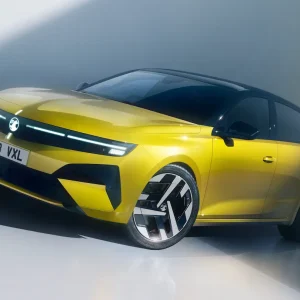Seat Ateca

What’s the story?
This is the beginning of Seat’s new product offensive over the next couple of years. The small SUV will become one of Seat’s “three pillars”, along with the Ibiza and Leon.
Timescale?
Order books open in May for a September delivery.
Why is it interesting?
Three diesels and two petrols will form the launch line-up, with the 112g/km 115hp diesel being 2g/km more efficient than the 150hp diesel. Four-wheel drive is available on the 150hp and 190hp diesels, with the 190hp coming only in all-wheel drive auto form. Good levels of connectivity will be one of Seat’s key selling points with the new car.
Any other business?
Nissan’s Qashqai is the key rival, hence Seat starting prices at £500 below the Nissan, with the entry model costing £17,990.
Renault Megane Sport Tourer

What’s the story?
New estate joins the new Megane hatchback to convince drivers to opt for a Renault over established Ford, Vauxhall and VW alternatives. In estate form the Megane Sport Tourer boasts the longest loadspace in the class at 2.8m.
Timescale?
It goes on sale this winter, with the Hybrid Assist diesel version, which recycles energy normally lost during deceleration or braking, available in 2017.
Why is it interesting?
That long loadspace and 580-litre boot, along with the Hybrid Assist diesel model, should make the Megane Sport Tourer one of the best fleet machines for bootspace per mpg. Sporty-looking GT and GT Line models, meanwhile, should win over a number of user choosers.
Any other business?
Four-wheel steering should make the Sport Tourer – which is 67mm longer than its predecessor – much more nimble around bends.
Vauxhall Mokka X

What’s the story?
The UK’s best-selling small crossover – in fleet and retail – gets a mid-life refresh with a new nose and much-improved interior being the key differentiators.
Timescale?
First cars will be here in October.
Why is it interesting?
A top 10 fleet seller, the Mokka has achieved considerable success since its launch less than four years ago, and the adoption of an interior largely based on the one praised in the new Astra raises perceived quality to address one of the vehicle’s weak points. More developments on Mokka X will be announced nearer to its on-sale date.
Any other business?
The ‘X’ suffix signifies the brand’s moves into a range of crossover and SUV models, with more to follow in the next couple of years, also with the ‘X’ branding.
Toyota C-HR

What’s the story?
Toyota’s wacky new compact crossover should steal customers looking for a distinctive high-riding machine away from the best-selling Nissan Qashqai and Honda’s HR-V, although it places much more focus on style over practicality than several rivals.
Timescale?
The C-HR is expected to arrive sometime in summer 2016.
Why is it interesting?
Thanks to a hybrid powertrain nabbed from the Prius and a frugal turbocharged 1.2-litre petrol option, the C-HR should prove cheap to run for fleets, with low benefit-in-kind charges and strong claimed economy. Use of the Prius’s hybrid petrol-electric system means that the C-HR should return less than 90g/km of CO2, cutting costs for fleets and users alike.
Any other business?
The 1.2-litre petrol model will be available with two and four-wheel drive, along with the option of a CVT automatic gearbox. According to Toyota, driving dynamics are also high on the agenda, with the car’s set-up tuned to satisfy those who enjoy driving. Meanwhile, Toyota’s Safety Sense system will be fitted as standard, including a pre-collision system, pedestrian detection and adaptive cruise control
Lots of Kias

What’s the story?
Kia’s model offensive sees the unveiling of the sub-89g/km petrol-electric Niro crossover (pictured above), the 37g/km Optima Plug-in hybrid and the practical Optima Sportswagon estate.
Timescale?
The Niro is set to go on sale in Q3 with both Optimas due in Q4.
Why is it interesting?
The Niro gets close to the Toyota Prius’s BIK-shrinking 70-75g/km of CO2, while the Plug-in should appeal to those wanting to lower their BIK even further. The Sportswagon is Kia’s first venture into the large estate market.
Any other business?
Kia has used energy-saving tricks such as the driver-only heating and cooling aircon functions to boost economy and reduce CO2 on the plug-in hybrid. A plug-in hybrid Optima Sportswagon is likely to come at a later date.





